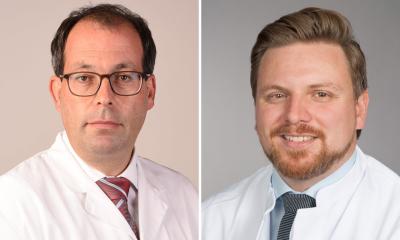Article • Education
Cardiologists gain MRI training
Seeing a substantially increasing importance of the cardiac MRI procedure, cardiologists have developed a specialist cardiac MRI training programme for their colleagues.
Report: Bettina Döbereiner
Over the last two years technical developments in cardiac MRI have undoubtedly had a major impact on cardiovascular medicine. To acknowledge this development, at least to some extent, the German Cardiac Society (DGK) has developed a specialist Cardio-MRI training programme. This January, Professor Hugo Katus, Head of the DGK’s Working Group for Training and Advanced Training, introduced the new curriculum at the annual DGK press conference in Berlin.
These days, cardiovascular medicine would be inconceivable without cardiac MRI and, according to Prof. Katus, who is also Medical Director of the Clinic for Cardiology, Angiology and Pulmonology at the University Hospital Heidelberg, its importance will continue to grow. Therefore, Katus and his DGK colleagues aim to ensure that this imaging procedure has a firm place in out- and in-patient cardiovascular medicine.

Unified standards
As a first step, the society’s cardiologists have developed an additional qualification in Cardio-MRI, which members of their profession can attain. The initiators hope that the curriculum (V. Hombach et al, Curriculum Cardiac Magnetic Resonance Tomography (CMR), in: Cardiology 2014, 8:451-451) developed by the DGK Working Group will set the first, unified standards for well-conceived MRI training (education CMR curriculum) across Germany.
Advanced training in this field is closely aligned with existing international curricula, such as those developed by the European Society of Cardiology (ESC) and the Society for Cardiovascular Magnetic Resonance (SCMR).
Just like its international models, the DGK curriculum is divided into three CMR-levels. Level 1 and 2 will provide the basis for a cardiologist to assess the indications, perform and interpret CMR examinations correctly in a large database of patients with a broad range of cardiovascular diseases. The third level will enable the cardiologist to lead a CMR laboratory and to perform scientific CMR examinations at a defined high level.
However, this curriculum is only a first, modest step; Prof. Katus believes there is still much to do to integrate CMR into cardiovascular medicine as envisaged by the cardiologists. At the conference, Katus pleaded for CMR to become a mandatory part of training for all those specialising in cardiology, and for CMR-qualifications to be recognised in all German Federal States – currently not yet the case. He pointed out that safe performance of cardiac MRI investigations in patients with critical heart disease, and proper interpretation of the functional MRI images, requires in-depth training and substantial expertise in clinical cardiology.
Reimbursement

Katus also argued for the statutory health insurers to comprehensively cover all out-patient CMR examinations without any limitations, and for in-patient CMR examinations to be reimbursed as a ‘separate charge’ (currently, cardiac MRI is only accounted for by being included in lump sum payments).
The professor also made a further demand in the name of the DGK, thereby venturing into somewhat controversial territory. He called for the equal treatment of cardiologists and radiologists from an accounting perspective, because the statutory medical insurers currently only reimburse costs if CMR is carried out and evaluated by a radiologist qualified in cardiac MRI. However, as recently as 2014 and in response to a lawsuit from a cardiologist, the Federal Social Court of Germany upheld the current regulation that governs that only sufficiently qualified radiologists are entitled to receive reimbursements for CMR costs.
In its decision, the court referred to, among other regulations, the ‘Two-Man Rule’, which remains intact as long as the division of duties between radiologists and cardiologists continues. The principle is also used to ensure that diagnosis is made independent of potential financial interests.
18.03.2015











